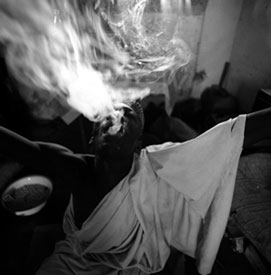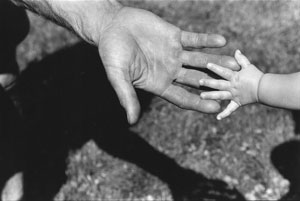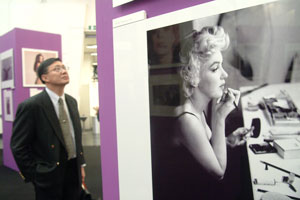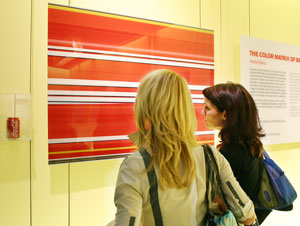 |
→ December 2004 Contents → Column
|
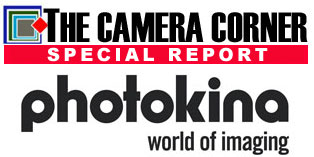 | |||||||||||||||||||||||||
Photokina, Part II: Photokina Masterpieces
December 2004
|
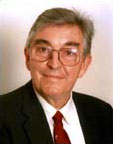 |
||||||||||||||||||||||||
|
Photokina comes around every two years and for a week Cologne becomes the world's most important meeting place for all those interested in camera and photographic novelties.
To see what can be created and achieved with all of the fancy new gear, scores of major photo exhibitions are shown in the museums across Cologne and within the Photokina exhibition grounds, supplemented by even more vernissages in Cologne's galleries. It would take a year or longer to see them all.
For a second time, major photo exhibitions occupied 4,000 square meters (43,055 square feet) of exhibition space in the "Visual Gallery" adjacent to the exhibition halls crammed with photo technology. There were voodoo ceremonies from Africa, bizarre photographs from modern China, war photography from Iraq, Afghanistan and Yugoslavia. Venice was shown through a camera obscura. There were huge baby photos contrapunted with portraits of the very old. Beside exhibitions of old or well-established masters were photo shows of young photographers supported, promoted and awarded by big and small sponsors from the industry, professional associations and foundations.
A 180 meter long, 1.50 meter wide (nearly 600 feet by 5 feet) photo print - allegedly one of the largest in the world - showed 1,177 images of people in Germany photographed during an 80-hour period - wound its way through the exhibition halls.
This writer felt intimidated by the multitude of photo exhibitions - many worth spending a few hours looking at or even revisiting. In the end, I managed to see only a fraction and never managed to cross the Rhine where in the old city of Cologne scores of museums and galleries would have been well worth a visit. Photokina is a bit like the Olympic Games: too much, too many, in too short a time. In the following review of some of Photokina's highlights, I was helped by good press releases and catalogues.
Anton Corbijn.
The "Mortals" exhibition, organized in conjunction with Stern magazine, presented an overview of the work by the Dutch photographer, Anton Corbijn.
Stern magazine wrote, "When he photographs, he doesn't simply produce an image - he portraits the soul of his objects. Nobody else has made the world of stars as transparent as he did with honesty and compassion." Among the "stars" shown - musicians, actors, artists, scientists - are Miles Davis, David Bowie, Allen Ginsberg, Stephen Hawking, Bob Marley, Johnny Depp, Frank Sinatra. And many others.
Stern also quoted Corbjin: "When I portrait artists, I try to document their lives and show that to the world in a stimulating fashion."
His portraits are described as showing not only a face but a situation or moment in his subject's life, sometimes realistic, sometimes abstract. In his series "fake documentaries," he examines paparazzi photography and questions its substance.
"It is not necessary to stand in front of the Eiffel Tower - sometimes a certain part of a wall is enough to provide the feeling that this is France," Corbijn says in explaining his approach to landscape and documentary photography.
In conjunction with the exhibition, Stern published a special Fotografie edition of Corbijn's work. (Euro 15.00)
Anton Corbijn has published 10 photo anthologies and staged many solo exhibitions around the world. The Stern Fotografie exhibition in Cologne and the Stern book present an overview of his works to date.
Voodoo by Alberto Venzago
Contemporary Chinese
In the Maoist days, photography was almost exclusively used as an instrument of propaganda, but along with everything else in China, a country and society leaping away from the traditions of Confucianism and Maoism, contemporary Chinese photography is stirring and exciting.
A central and unmistakable theme of several artists is the individual and his or her body which is shown, as in performance art. The artists seem to express the physical and mental changes which their country experiences today and which are sometimes considered oppressive: Naked men run through a modernistic cityscape fleeing what appear to be red aircraft or rockets pursuing them (Chi Peng, "Sprinting Forward-2," 2004). Cang Xi (2002) shows a naked person lying on what looks like blue water and ice floats within a flaming circle. The photographs are sold through a gallery in Berlin and Beijing (Alexander Ochs Galleries). Contemporary Chinese artists were exhibited in Europe for the first time in 1993 and many of these artists received scholarships to study in the United States and Europe. They have developed a new visual language of their own.
Portraits - in Italian Renaissance Style
With Kris Scholz, a German artist born in 1952 in Hanover, the portrait art of the Italian Renaissance seems to meet modern photographic technology. He blurs the landscapes in the background, as if they are flying past. The background is sharply contrasting with the figures he poses in the familiar manner of Titian, Leonardo da Vinci and other renaissance masters: folded hands, far-off gazes, three-quarter views.
Venice Seen by a Camera Obscura
One of the most photographed cities - Venice - is seen in the work of GŁnter Derleth (born in 1941 in Nuremberg) as never before. Capturing Venice without succumbing to old clichťs is not an easy exercise. GŁnter Derleth shows Venice through the hidden eye of the camera obscura to give a new perspective on the bridges, canals and scenery of Venice. Because of the peculiarities of the camera obscura - blurring and long exposure times - moving objects appear transparent or are not captured at all. "I give up control and receive in return unhurriedness, intuition and extremely intensified visual perceptions," Deleth is quoted in the catalogue. Venice has rarely looked more magical, beautiful and timeless as in his photographs. No wonder his album, "Venice," is reportedly sold out and his prints sell for megadollars. Derleth was a typesetter before he turned to photography in 1978 and his work has won several international awards. He started concentrating on the camera obscura in 1993.
Walter Schels: Birth, Age and Death - the Extremes of a Lifetime
The work of Walter Schels, one of the highest-profile portrait photographers in Europe, has broadened our view of the faces and physiognomies of people and animals for several decades. In 1974 he documented birth for a German parenting magazine. Since then he has concentrated on picturing birth and death and portraits of people close to these two extremes of human existence - from pictures of newborn babies to portraits of centenarians. One of his latest series showed hospice subjects just before and after their death; it won him a second prize in the World Press Photo 2003 competition.
Walter Schels was born in 1936 in Landshut, Germany. He worked as a window decorator until going to New York in 1966 to become a photographer. He returned to Germany in 1970. Since then he is well-known for his portraits of artists, politicians, celebrities and animals.
"Faith in Chaos": Pep Bonet in Sierra Leone
The civil war in the West African country of Sierra Leone (1991-2001) has been called "the cruellest in recent African history." Pep Bonet, a photojournalist who was born in 1974 in Mallorca and lives today in Spain and Amsterdam, calls his black-and-white project "Faith in Chaos," a project about hope. He photographed the people of Sierra Leone rebuilding their lives and young people trying to improve their existences in one of the poorest countries of the world. He accompanied a group of young people from place to place as they were searching for opportunities, some of them blind and amputatees, some former child soldiers. He photographed in mental hospitals, schools for the blind and soccer games between teams of amputees. Pep Bonet is the winner of the 2003 Kodak Award for Young Photographers.
War Envoys
The exhibit opened with scenes from the wars in Yugoslavia and ended with very recent events in Iraq. Seeing it was like passing through a horror chamber at the Munich Octoberfest Fair, only that every photograph was real and confronted the viewer with the realities of the past decade. The photographers of the exhibition were Alexandra Boulat (born in 1962 in France), Lauren Greenfield (who grew up in Venice, California), Ron Haviv, born in 1965 in the U.S.), Gary Knight (born in 1964, from England), Antonin Kratochvil (born in Czechoslovakia in 1947), Joachim Ladefoged (born in Denmark in 1970), Christopher Morris (born in the U.S. in 1958), James Nachtwey (born in the U.S. in 1948) and John Stanmeyer (born in the U.S. in 1964).
Bollywood Dreams
The Israeli photojournalist Jonathan Torgovnik (born in 1969 in Israel) provided with his show, "Bollywood Dreams," an insight into the fascinating world of the Indian cinema (Bombay and Hollywood = Bollywood). The Indian film industry is the largest in the world, with more than 800 films produced each year and 12 million filmgoers of India's one billion-plus population streaming to the mobile cinemas and theatres of India each day. "Bollywood Dreams" is an essay of the melodramatic and spectacular dream factories of the subcontinent which Torgovnik has been documenting since 1997.
ELVISWHO: Photo Art Focuses on the Elvis Presley Legend.
In a joint project, involving photographs and two videos, Peter Badge (from Hamburg, born in 1974) presented photo portraits of Elvis impersonators while Johann Zambryski (born in 1956 near Neuss, Rhineland) contributed images based on reproductions of original photos of Elvis. The whole show was concerned, according to the catalogue, with a better understanding of the legendary flesh-and-blood icon, Elvis Presley.
"Magic Hands" of Elliott Erwitt
Fujifilm Euro Press Photo Awards 2004
Photographers from 20 European countries had entered in the 2004 categories of Features, Technology, Sports and Nature for the Fujifilm Euro Press Photo Awards. A selection of the photographs was shown in the Visual Gallery of Photokina. The photographers had previously qualified for entry into the final on a national (European) level. Expressiveness, composition and technical quality were the criteria of the judges.
Kodak's Young Talent Promotion
As part of the Visual Gallery, the work of the 20 prize winners in the "Kodak Young Talent Promotion Award 2002-2004" was presented before a large audience for the first time. The exhibit showed the prizewinning photography projects from the past two years and included works from the fields of fashion and documentary photography. The awards promote promising photography projects which should be continued with the help of a grant of 2000 Euro ($2500). The aim of the Kodak awards for young talent is to encourage them to present themselves to the general public - and to be "discovered."
Dr. Erich Salomon Prize for Will McBride
To honor his lifetime work, the German Society for Photography awarded the annual Dr. Erich Salomon Prize to Will McBride. The award, named for the Jewish Berlin photographer who introduced candid 35mm photography to photojournalism in the 1920s and was murdered in Auschwitz during the Hitler regime, is considered in Germany to be the equivalent of a Nobel Prize for photography.
Will McBride, who was born in 1931 in St. Louis, Missouri, became well-known for his photo reportage and expressive photo essays published in "Twen" and other European magazines. Will McBride was in Cologne to receive the award and a special M7 Leica, which is part of the award.
Unpublished photographs of Marilyn Monroe and friends (Marlon Brando, John Cassavetes, Anthony Quinn and others) from the collection of photographer Sam Shaw and his son Larry were made available for a Photokina exhibition through the cooperation of the Shaw Foundation (New York), Ilford Imaging (Switzerland) and the Alinari Foundation (Florence, Italy). Sam Shaw (1912-1999) became known in the 1940s for his documentary photography of the U.S. His career in the film business began with a portrait of Marlon Brando from "A Streetcar Named Desire." He befriended Marilyn Monroe in 1951 when she was still unknown. His photographs were taken during Monroe's film work and her private life.
Digital Art by Andrej Barov
Exhibited at the Kodak stand, the work of the Russian Andrej Barov, born in 1958 in Leningrad, confused, surprised and occasionally pleased visitors like that of no other artist. A 120 cm by 120 cm (just under 48 inch by 48 inch) large color print showing 256 squares in colors from ochre to dark brown was labelled "Rembrandt van Rijn - Return of the Prodigal Son." A 90 cm by 120 cm (just under 36 inch by 48 inch) large print showing horizontral stripes of varying width in black, yellow, red and white was labeled "Coca Cola" (with a Coca Cola can placed beside the picture). A slide show from a tourist album was labelled with the usual tourist sites - A View of Big Ben; Venice - View from the Lido; New York - View from the World Trade Center of the Statue of Liberty, etc. - and had visitors looking for the familiar sites, only to shake their heads. It looked like a projector failure - because what they saw was digital computer-writing gobbledygook.
Wrong: The photographed images featured in Andrej Barov's "Digital Album" are views of cities that have been digitized and rendered as a computer code. In addition, Barov extracted a representative sum of pixels from a vertical section of the image and duplicated them into a broad format. The Rembrandt was digitized by Barov and reduced to 256 colors. The positioning and frequency of colors in the Rembrandt image were retained; however, they were detached from the object in the picture. With the aid of a 3-D animation program, the colors were transferred to a glass mosaic to create a new three-dimensional image.
Complicated? Yes. As is the text of Andrej Barov's catalogue, "Perceptions." But the results are attractive, as some modern art can be.
I recall that I saw similar arty abstract images, albeit only in black-and-white, when the advance mechanism of my AP analog drum picture transmitter jammed and the same information was transmitted again and again to the photo receiver. But that wasn't art.
"Gold" Show
The "Gold" exhibition showed works by young photographers of the German Association of Freelance Photographic Designers (BFF), dedicated to the theme of gold. The selection came from 66 photographers.
Best of the Best
The Promotion Award of the German Association of Freelance Photographic Designers (BFF) was bestowed on the "Best Final Degree Work in the Field of Photography" and a Reinhart Wolf Prize was additionally awarded to the final work which the jury selected from the Promotion Award winners as being the "Best of the Best." The awards are sponsored by the Kodak (Germany) Cultural Program, Stern magazine and the award's foundations. The winner of the 16th award in 2004 was Thomas Bak of Germany.
Captured on a 180 meter Photograph
On a sunny September weekend in Stuttgart, Germany, last year 26 photographers of the German Association of Freelance Photo Designers - which sees itself as the avant-garde of applied photography - lured more than 1,500 passersby and onlookers before their cameras. The resulting portraits (edited down to 1,177 taken over 80 hours) were then joined together by means of state-of-the-art digital technology to become a photograph of 180 meter length and 150 meter width (just under 600 feet by 5 feet). The giant work was created to demonstrate the state of the art in digital photography but also the creative spectrum of today's portrait photography. Some photographers allowed their models to climb trees, gave their subjects curious objects to hold and fragmented portraits into multi-layered collages. The resulting giant puzzle was titled "Captured."
© Horst Faas
|
|||||||||||||||||||||||||
Back to December 2004 Contents
|
|

